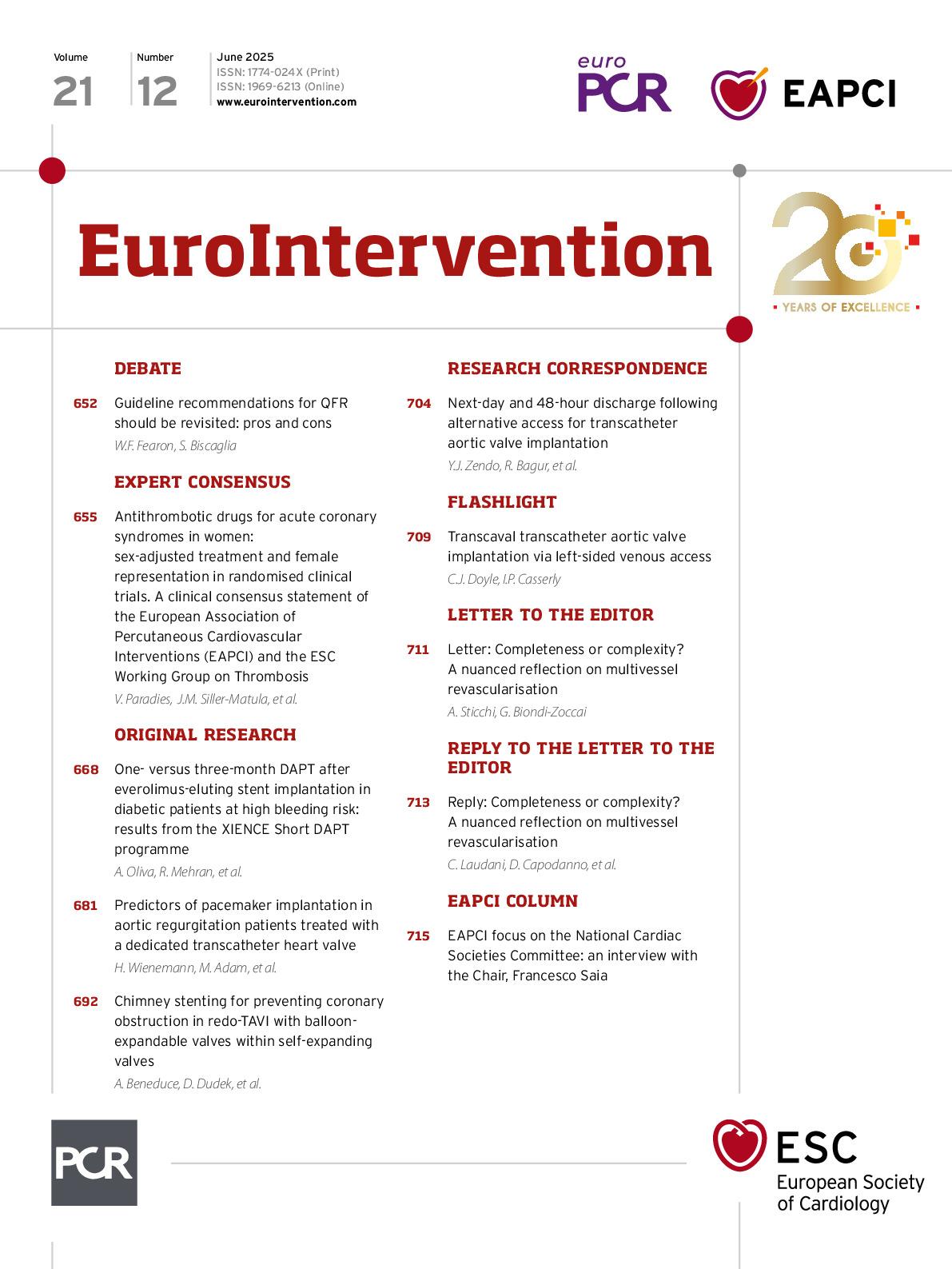Cory:
Unlock Your AI Assistant Now!
We read with great interest the recent manuscript by Laudani et al on complete revascularisation strategies in acute myocardial infarction with multivessel disease1. In parallel, the accompanying editorial by Smits and Paradies offers a broader clinical perspective on the evolution of these strategies2. We commend the authors for their comprehensive network meta-analysis; however, certain methodological aspects require further scrutiny, particularly the handling of heterogeneity and the robustness of pooled estimates.
Indeed, Laudani et al have admirably tackled the complexity inherent in comparing immediate versus staged complete revascularisation, both angiographyâ and functionally guided, in a heterogeneous clinical setting1. However, our review of their methodology suggests that the heterogeneity and inconsistency detected, especially in the 5ânode analysis, warrant further scrutiny. When direct and indirect comparisons diverge, it raises questions about the transitivity assumption, as the included trials exhibit variable definitions of “immediate” versus “staged” revascularisation. Given the significant variation in definitions of immediate versus staged revascularisation across the included studies, this heterogeneity may not only reflect statistical variation but also meaningful clinical differences that could influence treatment outcomes. For network meta-analysis, transitivity is a crucial assumption ensuring that indirect comparisons are valid. However, the inclusion of trials with differing baseline risk profiles and variations in ST-segment elevation myocardial infarction (STEMI)/non-STEMI (NSTEMI) composition introduces potential confounding that may challenge this assumption. These nuances can result in misclassification bias and potentially compromise the reliability of the pooled estimates.
Furthermore, the reliance on aggregate data, as opposed to individual patient data, limits the adjustment for confounding factors. Variations in patient demographics, such as the proportion of STEMI versus NSTEMI presentations and differences in baseline risk profiles, might have significantly contributed to the observed heterogeneity. This issue is particularly important given that landmark trials like PRAMI and COMPLETE have already demonstrated the benefits of complete revascularisation in a more homogeneous setting34. Our concern is that the inclusion of diverse trial designs and patient populations could dilute or exaggerate the true treatment effects. A patient-level meta-analysis could better account for confounding variables, such as lesion complexity, haemodynamic status, and individual ischaemic burden, thus refining the assessment of true treatment effect heterogeneity.
Another point deserving attention is the influence of large trials on the overall network estimates. Sensitivity analyses in the study suggest that a few large-scale studies may disproportionately drive the results. While this is a common challenge in meta-analyses, it underscores the need for careful interpretation, especially when extrapolating the findings to clinical practice. While the editorial by Smits and Paradies nicely outlines the evolution of clinical perspectives, our focus on the statistical and methodological challenges adds an important complementary viewpoint.
In conclusion, while Laudani et al provide a robust synthesis of current evidence, the issues of heterogeneity, inconsistent intervention definitions, and the limitations of aggregate data underscore the need for further refined analyses – potentially incorporating patient-level data. We believe that addressing these concerns in future research, such as in ongoing trials like COMPLETE-2 (ClinicalTrials.gov: NCT05701358) and FRAME-AMI2 (NCT05812963), as well as in dedicated patient-level analyses, will enhance our understanding of the optimal revascularisation strategy in multivessel acute myocardial infarction.
Guest Editor
This paper was guest edited by Franz-Josef Neumann, MD, PhD; Department of Cardiology and Angiology, University Heart Center Freiburg - Bad Krozingen, Bad Krozingen, Germany.
Conflict of interest statement
A. Sticchi has consulted for Edwards Lifesciences and received travel grants from Abbott and Terumo, both outside the present work. G. Biondi-Zoccai has consulted for Abiomed, Advanced Nanotherapies, Aleph, Amarin, Balmed, Cardionovum, Crannmedical, Endocore Lab, Eukon, Guidotti, Innovheart, Meditrial, Menarini, Microport, Opsens Medical, Terumo, and Translumina, outside the present work. The Guest Editor reports consultancy fees from Novartis and Meril Life Sciences; speaker honoraria from Boston Scientific, Amgen, Daiichi Sankyo, and Meril Life Sciences; speaker honoraria paid to his institution from BMS/Pfizer, Daiichi Sankyo, Boston Scientific, Siemens, and Amgen; and research grants paid to his institution from Boston Scientific and Abbott.

